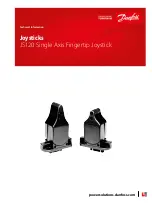
5
COMMUNICATION
GS3
multiple sensors on a single bus, you will have to start by addressing
your sensors individually as noted in the section above.
5.5
Power
The GS3 is an extremely low power sensor; when continuously pow-
ered, but not making a measurement or communicating, it uses 30
µ
A.
When using the sensor as part of an SDI-12 bus, it is recommended
that the sensors be excited continuously to avoid issues with initial
sensor startup interfering with the SDI-12 communications.
5.6
Reading
One of the advantages of the SDI-12 protocol is the number of possi-
ble queries that can be made to the sensor. From the standard sensor
readings (dielectric, temperature, and EC) to calibration coefficients,
several parameters can be stored in the sensor and read back. For
typical use, all that is needed is a simple output of dielectric, temper-
ature, and EC. The sequence to gather those values is quite simple
(Address the sensor
|
tell it what you want it to do
|
end with a “!”).
For example:
0R0! (Address sensor “0”
|
take an instantaneous reading “R0”
|
end
the statement “!”)
Most data loggers will run this sequence without any user input,
but occasionally it is necessary to interrogate the sensor directly. A
full list of the SDI-12 commands implemented in the GS3 is available
by contacting Decagon.
Additional examples of SDI-12 programs can be found at our software
section online at
http://www.decagon.com/support/downloads
.
16









































